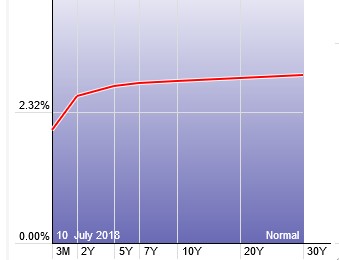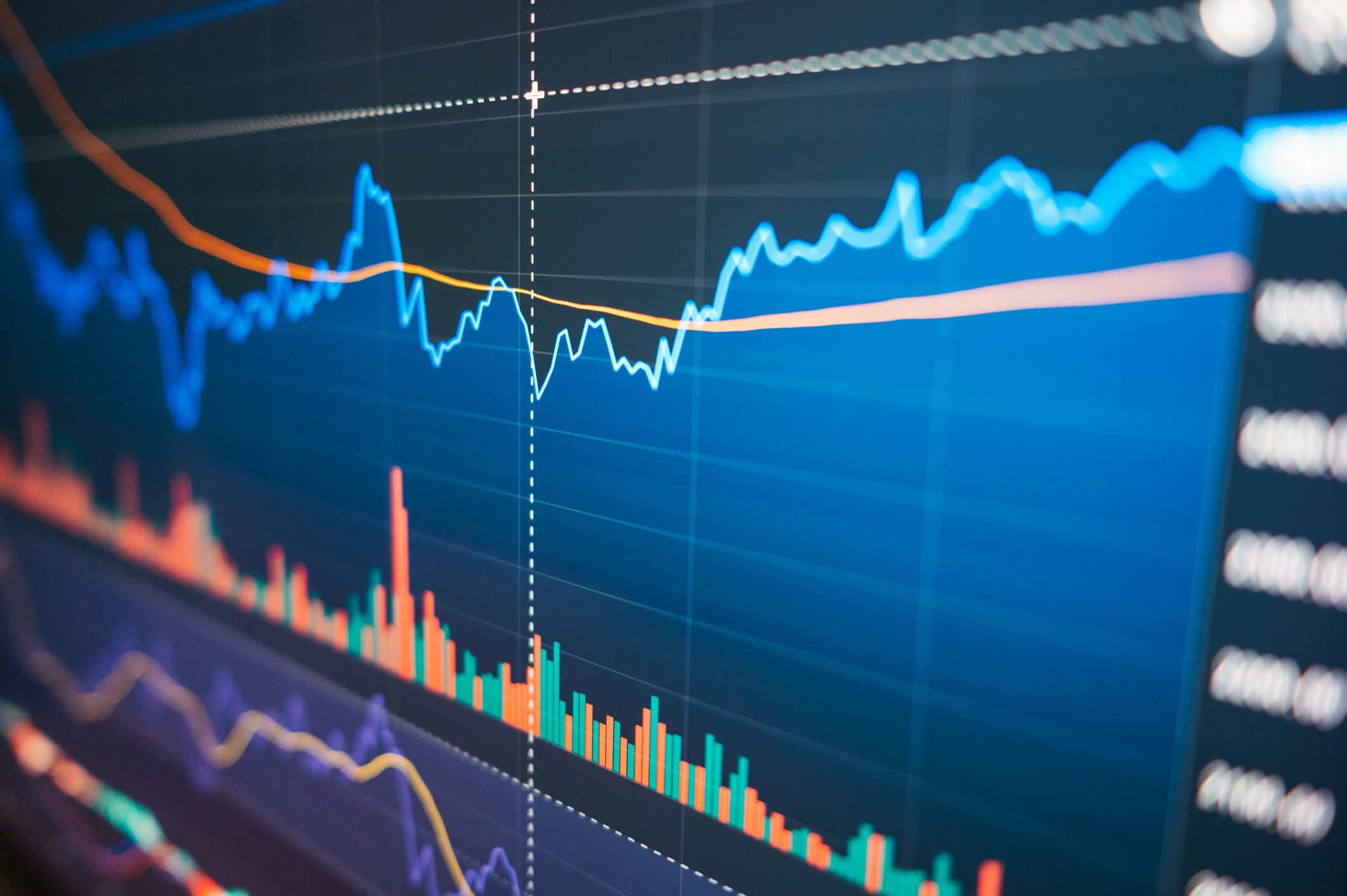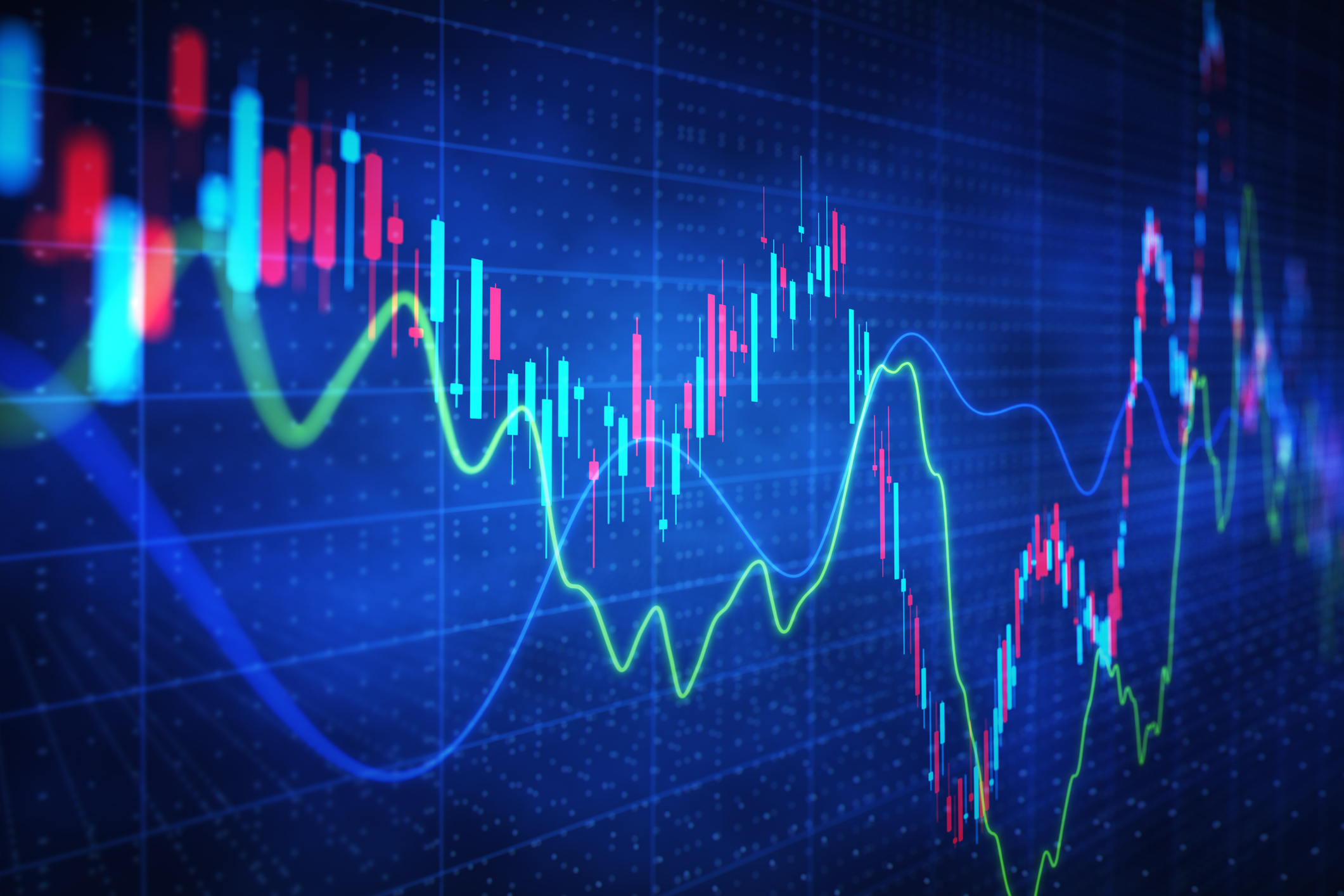America’s Yield Curve Panic Is Overdone
Financial pundits’ consensus about interest rates is off the mark.


The financial media seems to be up in arms about the flattening yield curve – the difference between short-term interest rates and long-term rates – and how it supposedly tells us that a recession is right around the corner.
There is a link between the two, but it’s not what everyone thinks, and now is not the time to panic.
What Is the Yield Curve?
The yield curve is a snapshot of interest rates for bonds due at various times in the future. A normal, or upward-sloping, yield curve tells us that short-term rates are lower than intermediate-term rates, and intermediate-term rates are lower than long-term rates.

Sign up for Kiplinger’s Free E-Newsletters
Profit and prosper with the best of expert advice on investing, taxes, retirement, personal finance and more - straight to your e-mail.
Profit and prosper with the best of expert advice - straight to your e-mail.
It makes sense that lenders want extra compensation for loaning money for longer periods of time. After all, they will be at risk longer.
However, keeping track of Treasury rates across the maturity spectrum is a tall order. That is why many people simplify things by watching the spread, or difference, between the rates on the two-year Treasury note and the 10-year Treasury note. It is the 2-10 spread that currently commands everyone’s attention.
The yield curve also tells us a little about Federal Reserve policies and the public’s expectations for inflation and growth. Short-term bonds, such as three-month Treasury bills, react a great deal to changes in the Fed’s moves. The two-year Treasury note reacts almost as much.
On the longer end of the curve, the 10-year note reacts more to inflation and growth expectations. That is why long-term rates can stay put even as the Fed starts to ratchet up short-term rates.
If we look at the 2-10 spread now, we will see that it’s historically very low, or narrow. While the Fed pushed up short-term rates, growth expectations seem to have stalled from their rousing 2017 performances.
The question is, “Does that mean recession is coming?”
The answer is, “Probably … but not for a while.”
One thing is for sure: “Probably” does not make for a compelling headline. It certainly won’t draw in readers the same way you could by pointing out that the last time the yield curve looked like this was just before the 2007-09 financial crisis and bear market.
What Happens Next?
The Fed knows it is caught in a tough situation. It knows it cannot use monetary policy to combat a recession if interest rates are already low. It also knows that raising rates will flatten the curve even more unless growth expands. So what can it do?
Well, it can change the rules of the game.
In the minutes following its June meeting, the Fed introduced a new yield curve formula – one that shows the curve to be upward-sloping and situation normal.
The new curve looks at the difference between the three-month rate and the expected rate in six quarters. In other words, it is the three-month/18-month spread. That difference is quite positive.
“Is it possible the Fed is desperately attempting to increase the monetary ammo available for the next recession?” questioned Michael Lebowitz, Partner at Real Investment Advice. He added, “The Fed has undue influence over the short-end of the curve,” suggesting that it does not want to leave the curve up to the public’s perceptions of growth.
Ironically, the reason for the change suggested by the Fed, according to Lebowitz, is that the Fed’s very own quantitative easing (QE) artificially repressed long-term rates compared to short-term rates.
Let’s take a look at the current yield curve in its traditional form.

From this graphic, courtesy of StockCharts.com, we can see that most of the curve from seven-year to 30-year is quite flat. But in the region between three months and two years, the slope is quite positive. This is where the Fed’s new yield curve lives.
They can call it what they want. It does not change the fact that the 2-10 spread is exceptionally tight.
The consensus expectation is for two more Fed rate hikes this year, bringing 2017’s total to four. More hikes are expected next year. With the current state of the yield curve, the next move by the Fed would immediately push the curve negative. Short-term rates would exceed long-term rates, creating an “inverted yield curve.”
Inverted yield curves tend to precede recessions. It happened in 2000 and it happened in 2007, and each was followed by recession and a major bear market in stocks. If it happens this year, pundits will jump up on their soapboxes to proclaim the next recession is coming.
Why the Panic May Be Overdone
Mark Ungewitter, Senior Vice President Investment Officer at Charter Trust Company, says the presumed relationship of inverted yield curves with equity tops is based largely on three cases: 2007, 2000 and 1990.
However, the relationship was fuzzy in the 1970s, and in fact, the curve was not inverted at all at the 1987 top. When you factor that in, you realize that’s not very rigorous proof at all.
“The truth is that the curve generally goes from steep to flat or inverted as a bull market progresses,” says Ralph Vince, President of Vince Strategies LLC. “Declining long-term rates have historically been bullish, but so are rising short-term rates. And even when the yield curve flattens, it is not bearish until it reaches a critically flat or inverted state.”
The good news is that given the long period of such low interest rates in general, it could set the table for a protracted inverted curve before anything breaks.
In the 1980s, the late investment manager Martin Zweig famously said, “Don’t fight the tape and don’t fight the Fed.” To many, it meant that when the Fed starts to raise interest rates it is time to pull in their investment horns.
However, that misses half the quote. The tape, or the trend in the stock market, is still to the upside.
But again, what should investors do if and when the curve inverts?
The answer is not to do anything different then they are doing now. An inverted yield curve tends to lead recessions by as much as two years. And this dovetails with Vince’s argument that the flattening yield curve is actually bullish for stocks right now.
Even before the curve inverts, people are already buzzing with fear over the possibility. Danielle DiMartino Booth, CEO of Quill Intelligence and former Senior Economic Advisor at the Dallas Fed, noticed a huge spike in searches within Google Trends last month for terms similar to “inverted yield curve.” It rivaled the peak seen in December 2005. Apparently, sentiment has already reached extremes in fear.
From a market analyst point of view, extreme fear means people already think and act a certain way. And that means the supposed effect of their worries may not come to fruition.
In other words, an inverted yield curve may not mean very much this time around.
Booth added that the focus on the 2-10 spread has created a herd mentality. But the real issue she sees is that other inflation curves have already inverted. In May, U.S. small businesses reported the largest inversion on record between future and current wage inflation. And four regional Fed manufacturing surveys – New York, Philadelphia, Richmond and Dallas – have recently revealed inversions between future and current price inflation.
Not everything comes wrapped in a tight package.
Amid these inversions, and the flattening yield curve, the clock may already be ticking for a recession. And because of quantitative easing, the target for its onset is significantly shorter than two years.
Jason Goepfert, CEO of Sentimentrader.com, raised the contrary argument saying that just because the curve does not invert does not mean the economy won’t tip into recession. “Assumed economic laws are dangerous.”
The yield curve and recessions do seem to be linked, but there are no guarantees. There is no law stating that inversion and recession always occur together.
The takeaway? Any end to the current bull market in stocks or the start of the next recession is not indicated right now just because the yield curve is so flat. However, we can say that perhaps late 2019 might not be so pleasant.
Get Kiplinger Today newsletter — free
Profit and prosper with the best of Kiplinger's advice on investing, taxes, retirement, personal finance and much more. Delivered daily. Enter your email in the box and click Sign Me Up.

-
 12 Investments No Retiree Should Make
12 Investments No Retiree Should MakeIn retirement, when it's wise to take fewer risks with your nest egg, some investments are just nuts.
By David Rodeck
-
 What the Capital One Discover Merger Means for Your Wallet
What the Capital One Discover Merger Means for Your WalletThe Capital One Discover merger reshapes the credit card landscape and could impact your credit card rewards, interest rates and card perks.
By Paige Cerulli
-
 Why Is Warren Buffett Selling So Much Stock?
Why Is Warren Buffett Selling So Much Stock?Berkshire Hathaway is dumping equities, hoarding cash and making market participants nervous.
By Dan Burrows
-
 If You'd Put $1,000 Into Google Stock 20 Years Ago, Here's What You'd Have Today
If You'd Put $1,000 Into Google Stock 20 Years Ago, Here's What You'd Have TodayGoogle parent Alphabet has been a market-beating machine for ages.
By Dan Burrows
-
 Stock Market Today: Stocks Retreat Ahead of Nvidia Earnings
Stock Market Today: Stocks Retreat Ahead of Nvidia EarningsMarkets lost ground on light volume Wednesday as traders keyed on AI bellwether Nvidia earnings after the close.
By Dan Burrows
-
 Stock Market Today: Stocks Edge Higher With Nvidia Earnings in Focus
Stock Market Today: Stocks Edge Higher With Nvidia Earnings in FocusNvidia stock gained ground ahead of tomorrow's after-the-close earnings event, while Super Micro Computer got hit by a short seller report.
By Karee Venema
-
 Stock Market Today: Dow Hits New Record Closing High
Stock Market Today: Dow Hits New Record Closing HighThe Nasdaq Composite and S&P 500 finished in the red as semiconductor stocks struggled.
By Karee Venema
-
 Stock Market Today: Stocks Pop After Powell's Jackson Hole Speech
Stock Market Today: Stocks Pop After Powell's Jackson Hole SpeechFed Chair Powell's Jackson Hole speech struck a dovish tone which sent stocks soaring Friday.
By Karee Venema
-
 Stock Market Today: Stocks Drop Ahead of Powell's Jackson Hole Speech
Stock Market Today: Stocks Drop Ahead of Powell's Jackson Hole SpeechSentiment turned cautious ahead of Fed Chair Powell's highly anticipated speech Friday at the Jackson Hole Economic Symposium.
By Karee Venema
-
 Stock Market Today: Stocks Rise After Jobs Data Lifts Rate-Cut Odds
Stock Market Today: Stocks Rise After Jobs Data Lifts Rate-Cut OddsPreliminary data from the Bureau of Labor Statistics shows job growth was lower than previously estimated.
By Karee Venema